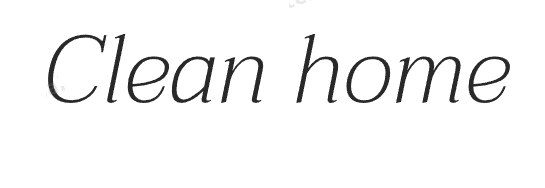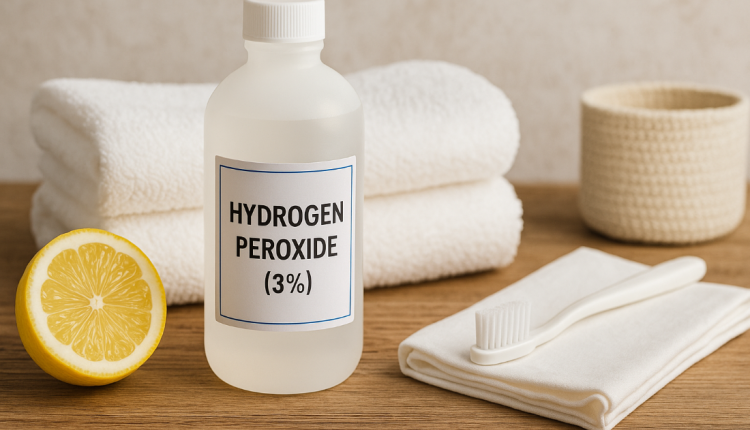Hydrogen Peroxide (3%): A Powerful Natural Antiseptic and Bleaching Agent
Hydrogen peroxide, particularly in its 3% concentration, is a simple yet potent compound with a wide array of applications in health, hygiene, and household care. Though it consists of just water and oxygen (H₂O₂), this unassuming liquid holds remarkable antimicrobial and oxidizing properties that make it a natural alternative to chemical-laden products. As awareness of clean and sustainable living increases, more individuals are turning to hydrogen peroxide as a safer and environmentally friendly solution for disinfection and natural bleaching.
The Chemical Composition and Functionality of Hydrogen Peroxide
Hydrogen peroxide is a pale blue liquid in its pure form, though at 3% concentration it appears colorless. It is slightly more viscous than water and is known for its bubbling effect when it comes into contact with organic material. This reaction is a result of the oxygen being released—a process that gives hydrogen peroxide its cleaning and antiseptic power.
The compound decomposes into water and oxygen upon exposure to light or heat, which is why it is stored in dark bottles. The release of oxygen is what disrupts the cellular structure of bacteria, viruses, and fungi, effectively neutralizing them without leaving behind harmful residues.
Hydrogen Peroxide as a Natural Antiseptic
One of the most well-known uses of hydrogen peroxide is its role as an antiseptic. When applied to minor wounds, cuts, or abrasions, it helps cleanse the area by destroying harmful microorganisms. This not only prevents infections but also promotes faster healing in a safe and chemical-free manner.
Treating Minor Skin Injuries
For decades, 3% hydrogen peroxide has been used in first aid to treat minor skin injuries. The bubbling action not only helps remove dirt and debris but also indicates its antimicrobial activity. It is particularly useful for cleaning shallow cuts and scrapes that are prone to infection from bacteria commonly found on the skin or in the environment.
Oral Hygiene and Mouth Rinse
Hydrogen peroxide also serves as an effective mouthwash when diluted with water. Its antiseptic properties help eliminate bad breath, whiten teeth, and reduce inflammation of the gums. By breaking down biofilm and bacteria, it can aid in preventing gingivitis and other oral infections.
However, it should always be used in moderation and never swallowed. Prolonged or excessive use may irritate the mucous membranes, so it is crucial to adhere to recommended dilutions and usage frequency.
Fighting Skin Infections
Some individuals use diluted hydrogen peroxide to manage skin conditions such as acne, fungal infections, and bacterial rashes. Its ability to penetrate the skin and release oxygen helps reduce bacterial load and promote clearer skin. Nonetheless, dermatological supervision is advisable to avoid skin irritation or sensitivity.
Natural Whitening and Bleaching Properties
Beyond its antimicrobial capabilities, hydrogen peroxide is celebrated for its whitening and bleaching effects, both in personal care and household cleaning.
Teeth Whitening
Due to its oxidizing nature, hydrogen peroxide is a common ingredient in many over-the-counter teeth whitening products. At home, a diluted 3% solution can be used as a mouth rinse or in DIY whitening pastes. The oxygen released during decomposition breaks down staining molecules on the surface of the teeth, leading to a visibly brighter smile over time.
Nail Whitening
Nails discolored by nail polish or fungal infections can benefit from hydrogen peroxide. Soaking the nails in a solution of hydrogen peroxide and baking soda helps restore their natural color while eliminating odor-causing bacteria and fungi.
Hair Lightening
Although more commonly used in higher concentrations for this purpose, 3% hydrogen peroxide can be applied to hair as a gentle lightening agent. Mixed with water and sprayed on hair exposed to sunlight, it can gradually lighten strands, giving a natural sun-kissed effect. This method avoids the harsh chemicals found in commercial hair dyes and is preferred by those seeking a subtle, natural look.
Household Cleaning and Disinfection
Hydrogen peroxide’s ability to kill pathogens makes it an excellent, non-toxic alternative to conventional household cleaners. It is particularly effective on non-porous surfaces and is safe for use in homes with children or pets.
Kitchen and Bathroom Surfaces
Used as a spray, 3% hydrogen peroxide can disinfect countertops, sinks, and bathroom fixtures. It effectively eliminates bacteria like E. coli and Salmonella, as well as mold and mildew. Unlike bleach, it does not emit harmful fumes or cause respiratory irritation.
Laundry Whitening and Odor Removal
Adding hydrogen peroxide to laundry helps whiten clothes and remove stubborn stains, including blood, wine, and grass. It is also effective at neutralizing odors in gym clothes and towels. As a natural bleach alternative, it is safe on most fabrics and does not weaken fibers like chlorine bleach can.
Fruits and Vegetables Wash
A diluted hydrogen peroxide wash can be used to clean fruits and vegetables, removing pesticide residues and killing surface bacteria. Rinsing thoroughly with water afterward ensures safety and freshness.
Environmental and Health Benefits
Hydrogen peroxide is biodegradable and breaks down into harmless components—water and oxygen. This makes it an eco-friendly choice for those looking to reduce their environmental footprint. Unlike many synthetic disinfectants and bleaches, it does not contribute to chemical pollution or generate toxic byproducts.
Furthermore, because it is non-toxic when used appropriately, it reduces the risk of accidental poisoning or chemical burns in the home. This makes it a particularly attractive option for households with young children, pets, or individuals with chemical sensitivities.
Precautions and Safe Usage
Despite its natural profile, hydrogen peroxide must still be used responsibly. Direct contact with eyes and prolonged exposure to skin should be avoided. Ingestion of hydrogen peroxide, even at 3%, can cause nausea, vomiting, or more serious health issues, depending on the quantity consumed.
Always store it in its original dark bottle, away from direct sunlight and heat. This preserves its potency and ensures safety.
For oral and skin use, hydrogen peroxide should be diluted as necessary, and usage should be stopped if irritation occurs. Consulting with a healthcare professional before beginning any new treatment or regimen is always recommended.
Conclusion
Hydrogen peroxide at 3% concentration stands out as a remarkably effective and natural antiseptic and bleaching agent. Its versatility extends from first aid and personal care to household disinfection and sustainable living practices. Safe, accessible, and environmentally friendly, it is a staple worth including in every home. When used correctly, hydrogen peroxide offers a powerful way to clean, whiten, and heal—naturally and responsibly.

